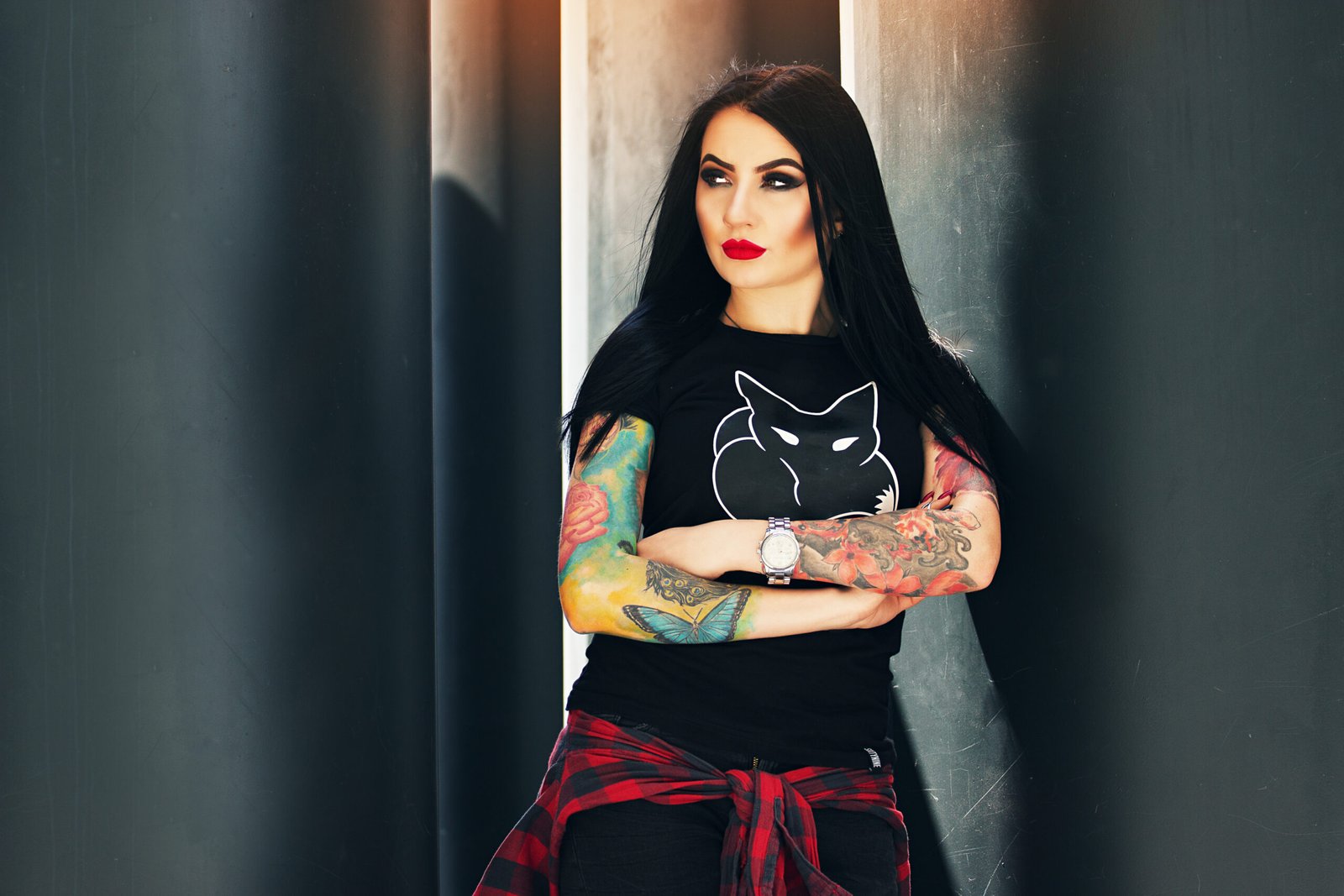The world of heavy metal is more than just music. It’s a lifestyle, a rebellion, and a subculture that defies conformity. Heavy metal merchandise has always been an extension of that identity—an outward display of the raw, unfiltered self-expression that the genre promotes. From iconic band tees to custom patches, the items fans wear and collect aren’t just accessories; they’re symbols of loyalty, rebellion, and a deep connection to the music that fuels their souls.
In this article, we’re going deep into the significance of heavy metal merchandise and how it plays a crucial role in the scene. Whether you’re a die-hard fan or a newcomer trying to understand the importance of these items, this article will give you a comprehensive overview of how heavy metal merch fuels fan culture, identity, and self-expression. We’ll also explore the different types of merch and where to find the best pieces that will speak to your metal heart. Prepare to dive into a world of leather, spikes, and badass designs, because heavy metal merchandise is more than just clothing—it’s a lifestyle statement.

The History and Evolution of Heavy Metal Merchandise
To understand the power of heavy metal merchandise, you need to take a journey back to the origins of the genre itself. Heavy metal exploded onto the scene in the late ’60s and early ’70s with bands like Black Sabbath, Led Zeppelin, and Judas Priest. As these bands grew in popularity, so did their need to differentiate themselves visually. This was the birth of heavy metal fashion, and along with it, the creation of merch as an essential part of the fan experience.
Band t-shirts, in particular, became one of the most iconic symbols of fandom. What began as simple screen-printed tees evolved into intricate pieces of art featuring skulls, flames, and other dark imagery. These designs symbolized more than just love for a band—they became part of a larger ethos, representing rebellion, darkness, and a countercultural stance against the mainstream.
Merchandise didn’t just stop at t-shirts. As the metal scene evolved, so did its range of products. Leather jackets, patches, hoodies, vinyl records, and custom-made accessories all found their place in heavy metal culture. Collectors of rare band memorabilia became a subculture within the subculture, with items like tour posters and signed records becoming valuable commodities. Owning rare or unique pieces became a badge of honor.

Self-Expression Through Metal Merch
For metalheads, wearing merch is more than just supporting their favorite bands—it’s about making a statement. Heavy metal fashion is intentionally loud, aggressive, and anti-mainstream, just like the music itself. Every piece of merch is a small part of that identity. Whether it’s a patch from a local band sewn onto a battle vest or a limited-edition t-shirt from a world tour, these items are meant to signify allegiance, attitude, and belonging.
Imagine walking into a venue packed with people wearing band tees, spiked leather jackets, and combat boots. Each piece of clothing speaks volumes about who that person is. A Metallica t-shirt might scream ‘thrash metal head’ while a Cannibal Corpse hoodie could show allegiance to brutal death metal. People who wear heavy metal merch are telling the world they’re not just casual listeners; they live and breathe the music. It’s about turning your body into a canvas that showcases your passions, fears, and individuality.
The unspoken code of heavy metal merch is that you’ve earned it. You went to the concert, you connected with the band, and you walked away with a piece of them to carry into the world. It’s a signifier of belonging, of having experienced something real. In a world where so much is shallow, heavy metal merch is deeply personal, with fans often having strong emotional attachments to their items.

The Influence of Metal Merch on Pop Culture
It’s not just die-hard metalheads who have embraced the aesthetic. Over the past few decades, heavy metal merchandise has infiltrated mainstream fashion. From high-fashion runway shows to streetwear brands, heavy metal imagery has been co-opted and reinterpreted in many ways. You’ve likely seen people who don’t even listen to heavy metal wearing Metallica or Slayer shirts, purely for their fashion appeal. While some metalheads scoff at the mainstream’s appropriation of their beloved culture, it’s undeniable that metal merch has left an indelible mark on global fashion trends.
The influence of heavy metal fashion can be traced to iconic symbols like the Iron Maiden logo or the Slayer pentagram. These have been replicated on everything from backpacks to phone cases, becoming part of a broader aesthetic that appeals to more than just metal fans. However, true fans know that the real value of heavy metal merchandise isn’t in its appearance—it’s in the meaning behind it.

What Makes a Piece of Heavy Metal Merchandise Stand Out?
When looking for high-quality heavy metal merch, it’s not just about slapping a band logo on a t-shirt. The best pieces tell a story. Whether it’s a tour shirt from a historic concert, a unique hand-designed jacket, or limited-edition album art, the significance comes from the personal connection to the music and culture.
Here are a few key elements that make heavy metal merchandise stand out:
- Design: Bold, striking designs are essential. Most heavy metal merch features dark, intricate graphics with skulls, bones, dragons, and other macabre elements that reflect the genre’s themes.
- Quality: A piece of heavy metal merchandise should last for years. Whether it’s a leather jacket or a cotton t-shirt, durability is key. Metal fans don’t just wear their merch—they live in it.
- Authenticity: True heavy metal merch isn’t just about branding. It’s about the story behind it. That’s why collectors value rare or vintage items—these pieces hold history and are often tied to significant moments in the metal scene.

Why Heavy Metal Merch Matters More Than Ever
In the age of fast fashion and disposable trends, heavy metal merchandise remains timeless. It isn’t about chasing what’s popular or what’s hot for the season—it’s about wearing something meaningful, something that connects you to a larger community. The resurgence of vinyl records, band patches, and DIY fashion has breathed new life into the world of heavy metal merch, allowing younger generations to experience the authenticity that older fans have cherished for decades.
The importance of supporting bands through merchandise is also crucial in today’s music industry. With streaming platforms paying artists fractions of a penny per play, buying merch is one of the most direct ways to support the bands you love. When you buy that tour shirt, you’re not just getting a cool piece of clothing—you’re helping keep the scene alive.

Finding the Best Heavy Metal Merchandise
If you’re on the hunt for killer heavy metal merchandise, you need to know where to look. While band merch is sold at concerts and festivals, many great pieces can also be found online. Smaller, independent shops often stock unique, custom-made items that you won’t find anywhere else.
For Women’s T-Shirts, check out Alt Style Clothing’s Collection. They offer a killer selection of badass tees that will have you looking fierce at your next gig. For Men’s T-Shirts, head over to their Men’s T-Shirt Section to find something that will speak to your inner metal god.
If you’re looking for more information about heavy metal culture, lifestyle, and the latest merch trends, be sure to visit the home page of Haborymx. You’ll find all the resources you need to keep your metal fashion game strong.
Follow me on social media for more alternative fashion, heavy metal culture, and everything goth: Lina’s Social Media.

Heavy metal merchandise is more than just a way to show your support for bands—it’s a way of life. Whether you’re decking yourself out in leather and spikes or rocking a simple t-shirt, the items you choose to wear are a reflection of who you are and what you stand for. In a world that often tries to silence the unconventional, heavy metal merch is a bold, rebellious shout of defiance, and it’s here to stay.



